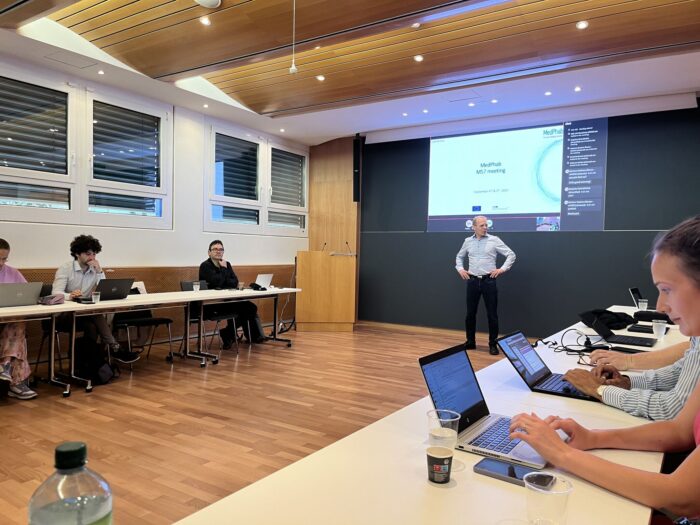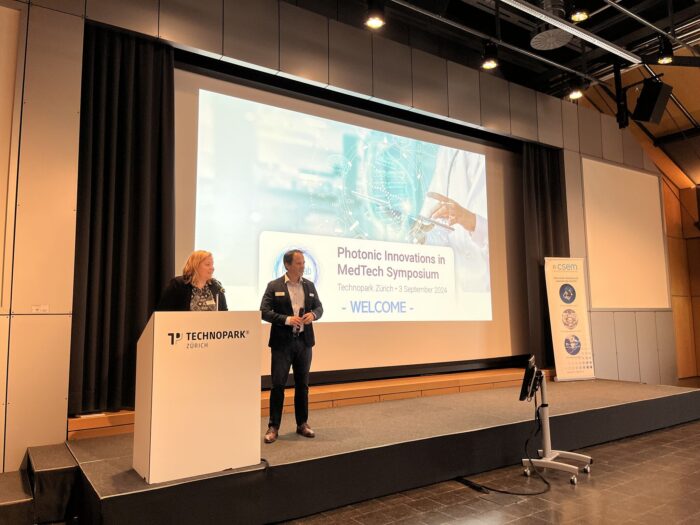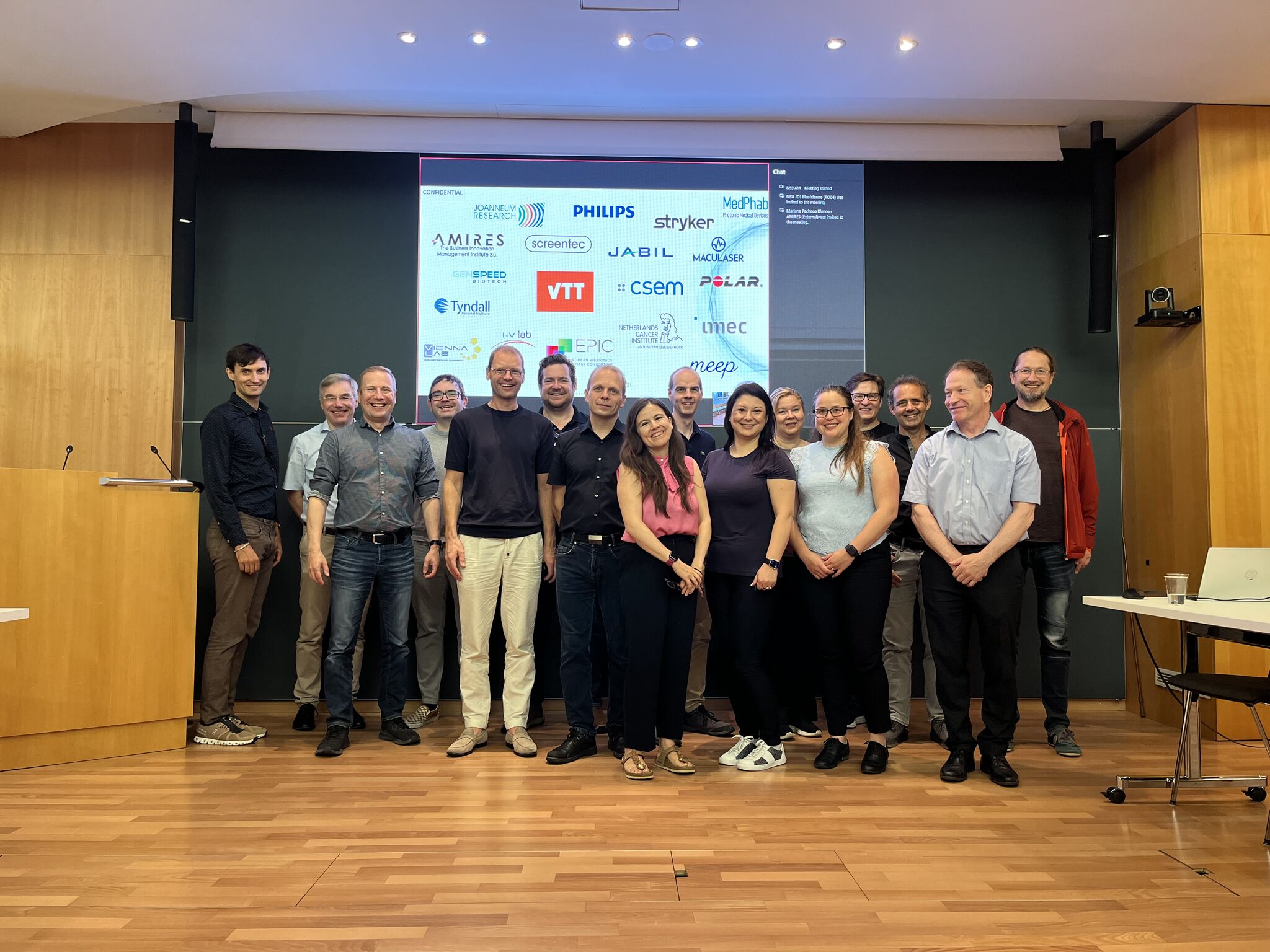MedPhab last event: MedPhab EU project ends, but its story continues…
September 3MedPhab, a successful pilot line that supports companies in developing medical devices using photonics technologies. Research centres and industrial partners have collaborated to achieve this goal. After more than four and half years, the consortium met for the last time under its current name but will continue its work under sustainable operations. MedPhab non-profit association (NPA) organized the Symposium “Photonic Innovations in MedTech,” on September 3, 2024 in Zurich, Switzerland. In this event, MedPhab showcased its results of MedPhab EU-pilot line to a broader audience. Afterwards, on September 4 and 5, consortium partners gathered in Neuchatel, Switzerland, hosted by partner CSEM.
The event included keynote speakers and several companies pitching their products, and ideas. Within the main takeaways of the Symposium, are:
- To achieve success of medical devices as products, the development should include design for manufacturing (testability, manufacturability). In this, risk assessment should be carefully considered, as well as thinking in advance what is the volume target. This process should be done in collaboration designer with manufacturer (Herbert Ernst, Jabil).
- Continuous manufacturing, which is a production trend, requires the understanding of the process and complex analytics (Markus Rieker, Horiba).
- Half of the Swissphotonics ecosystem members address MedTech or Life Science applications. The Swissphotonics in an important network of stakeholders in Switzerland. (Pierre-Yves Fonjallaz, Swissphotonics).
- MedPhab NPA bases its way of working developed in the MedPhab EU-funded project , which combines industry and R&D perspective and supports companies, closing the gap between R&D and upscaling of innovative medical devices (Willem-Jan de Wijs, Philips).
- Photonic technologies are essential in several application devices, as proven by the companies presented.
- Companies that are developing a medical device need to start regulatory preparations for medical device certification, as soon as the Proof of Concept has been verified (Kamalpreet Kaur, SGS, notified body)
- Include a roadmap for CE certification (which can take up to 18 months) in the business plan
- Start the conversation with a notified body early on
- Invest on Quality Assurance and Regulatory Affairs personnel
- Member state regulations are over MDR
- Regulatory and quality assurance is a continuous process
- Medical devices and IVD (in vitro diagnostics) regulation requires the fulfilment of a big amount of documentation, including software as medical devices. In order to have all in place, you should count with an expert on this, through a consultant company or in house. (Séverine Cranz, Effectum Medica)
- Clinical evaluation and clinical trials are essential.
During the MedPhab consortium meeting, its achievements were presented and discussed:
- The pilot line operational processes were established and validated through five use-cases and 15 demo-cases with external companies that were selected through an open call.
- MedPhab continues in building the ecosystem through the PhotonMed JU Chips project, recently funded and through the sustainable operations of the MedPhab non-profit association (NPA).
- All planned deliverables and milestones have been achieved, with exception of one last document to be completed at the end of the project (end of September 2024).
- Final review meeting with the European Commission will take place at the end of the year, and with that the closure of the first part of MedPhab!
AMIRES is delighted to be part of this journey, overseeing the project, managing the helpdesk for open calls, and handling various activities such as the project website and community management platform. Collaborating with such dedicated partners, AMIRES is part of MedPhab’s contribution to the advancement of medical device development using photonics.



